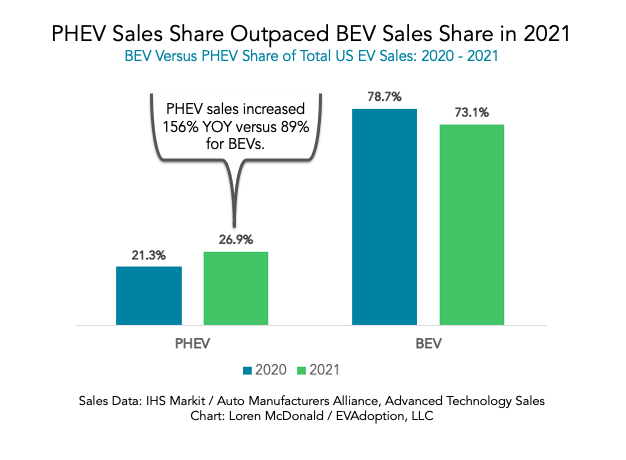PHEV Growth: Toyota’s Bold Plans for Electric Vehicle Expansion

As the automotive industry faces a pivotal shift towards electrification, PHEV growth is becoming a central focus for leading manufacturers like Toyota. With the ambition to increase Toyota PHEV sales from a modest 2.4% to an estimated 20% by 2030, the company is responding to evolving consumer preferences and regulatory pressures. Plug-in hybrid vehicles (PHEVs) offer a unique solution, combining the benefits of both electric and traditional fuel systems, thus appealing to a broader audience. This strategic push not only positions Toyota prominently in the hybrid electric market but also reflects wider EV sales trends that indicate a rising acceptance of electrified technologies. By enhancing their lineup and expanding the range of Toyota electric vehicles, the brand is aiming to carve out a significant niche in this rapidly competing sector.
In the evolving landscape of the automotive market, the term “plug-in hybrids” has taken center stage, representing an innovative class of vehicles that blend electric and gasoline power. These vehicles have the capability to operate solely on electric energy for a certain range before seamlessly transitioning to a conventional fuel engine. This dual functionality makes plug-in hybrids a versatile choice for consumers who may be hesitant to fully embrace all-electric options. As manufacturers like Toyota ramp up their efforts in producing these eco-friendly alternatives, the potential for growth in the plug-in hybrid segment appears promising. This effort not only targets increased sales but also aligns with broader environmental goals and consumer demand for more sustainable mobility solutions.
Toyota’s Bold Leap Towards PHEV Growth
Toyota Motor Company, a pioneer in the hybrid vehicle market with its iconic Prius, is strategically shifting its focus towards plug-in hybrid electric vehicles (PHEVs). As part of their future roadmap, Toyota aims to elevate PHEV sales from a mere 2.4% to an ambitious 20% by the year 2030. This growth initiative not only signifies Toyota’s commitment to electrification but also highlights the increasing consumer demand for vehicles that offer the versatility of both electric and gasoline powertrains. The expansion came as the company faces challenges within a landscape marked by regulatory uncertainty and fluctuating consumer acceptance of electric and hybrid technologies.
As consumer preferences evolve, Toyota is ensuring that its PHEV offerings are designed to meet changing demands. The improved electric range of PHEVs, such as the latest RAV4 model, showcases Toyota’s dedication to increasing the efficiency and effectiveness of its hybrid electric vehicles. With a growing number of miles available on electric power alone, Toyota is responding to the market’s need for sustainable yet practical vehicle options. This growth strategy positions Toyota as a frontrunner in the hybrid electric market, ready to capitalize on the shifting dynamics of consumer interest and regulatory environments.
Frequently Asked Questions
How is Toyota planning to increase its PHEV growth in the hybrid electric market?
Toyota is targeting significant growth in plug-in hybrid electric vehicles (PHEVs), aiming to raise their share in U.S. sales from 2.4% to roughly 20% by 2030. The company is focusing on improving electric-only ranges in models like the redesigned RAV4, which now offers up to 50 miles on electric power alone.
What factors could impact the forecasted growth of Toyota PHEV sales?
Several factors could affect Toyota’s PHEV growth, including regulatory changes, customer acceptance of electrified technologies, affordability, and competition in the hybrid electric market. These elements could influence Toyota’s ability to meet its sales goals for PHEVs.
What trends are we seeing in PHEV sales within the hybrid electric market?
Current trends indicate that PHEV sales in the U.S. are expected to increase from about 2% last year to around 5% by the end of the decade, according to S&P predictions. This growth is fueled by companies like Toyota enhancing their PHEV offerings and consumer interest in electrified vehicles.
How does Toyota differentiate its PHEVs from traditional hybrid electric vehicles?
Toyota’s PHEVs are designed to function as all-electric vehicles for a certain mileage before switching to a traditional gas-powered engine. Unlike traditional hybrids, PHEVs require charging from an outlet to maximize their electric range, which distinguishes them in the hybrid electric market.
What improvements has Toyota made to the electric range of its PHEVs?
Toyota has significantly improved the electric range of its PHEVs. For example, the 2025 RAV4 PHEV can now travel up to 50 miles on electric power alone, showcasing the advancements made by the company in enhancing PHEV capabilities while aiming for growth in the market.
Why have consumer perceptions affected PHEV growth and sales?
Consumer understanding of PHEVs has historically hindered sales, as many potential buyers are uncertain about the necessity of plugging in the vehicle. This misconception, despite PHEVs being able to operate as traditional gas-powered vehicles, has contributed to slower adoption rates and negative perceptions within the hybrid electric market.
What is Toyota’s overall strategy for PHEV and EV sales trends in the coming years?
Toyota plans to enhance its PHEV strategy by expanding its lineup and improving the electric driving range, while continuing to invest heavily in electric vehicles (EVs). The company’s approach aims to meet evolving consumer needs and respond to regulatory developments in the electric vehicle landscape.
| Key Point | Details |
|---|---|
| Toyota’s PHEV Growth Target | Increase PHEVs in U.S. sales from 2.4% to roughly 20% by 2030. |
| PHEVs vs. Traditional Hybrids | PHEVs can operate as all-electric for a limited range and need to be plugged in for charging. |
| Consumer Concerns | Many consumers are apprehensive about plugging in, affecting sales. |
| Sales Growth | PHEV sales grew 39% last year for Toyota, with significant increases in specific models. |
| Impact of Regulations | PHEV growth projections could change based on regulations and consumer acceptance. |
| EV-only Range Improvement | EV-only range has improved, with some models reaching up to 50 miles. |
Summary
PHEV growth is set to take center stage as Toyota targets a significant increase in its plug-in hybrid electric vehicle offerings. The company is responding to market demands and regulatory changes, aiming to transition from a mere 2.4% of U.S. sales to 20% by 2030. This ambitious strategy reflects Toyota’s commitment to adapting to the evolving automotive landscape, despite challenges in consumer awareness and market acceptance. With solid sales growth and improvements in electric range, Toyota is well-positioned to succeed in promoting PHEV technology.




